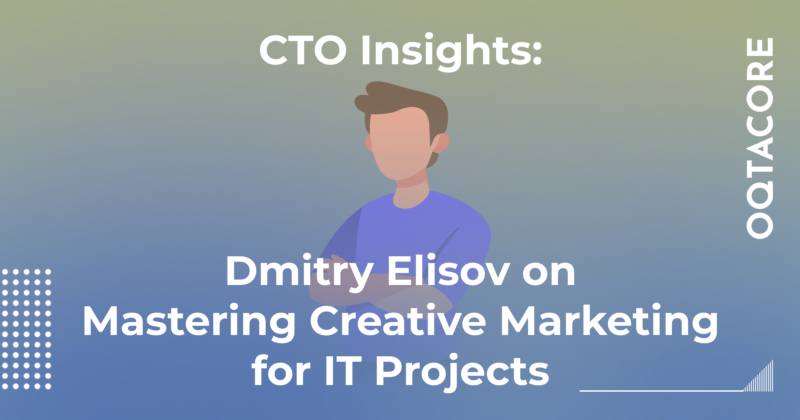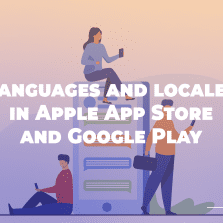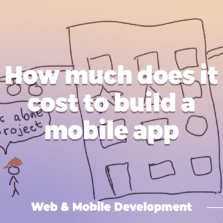
Based on my experience, I can highlight three rules for effective project marketing promotion.
I have been involved in the creation of many IT startups, many of which we promoted through influencers, now stylishly called Web3 KOLs. Our SMM department’s job was to find and select bloggers, verify the quality of their content, create a technical brief for advertising, check its release, and fine-tune the sales funnel. In addition to this, we have been very successful in, and continue to focus on, targeted advertising. Given all this experience, I can highlight three rules for effective project promotion:
- The creative must solve the audience’s problem.
- The creative must be clear and speak the audience’s language.
- The creative must be in the context of the audience’s life.
Additionally, creatives can generally be divided into two categories:
- Creatives for targeted advertising;
- Creatives for influencers.
Let’s dive deeper into each of these three rules.
Creative in the Context of the Audience’s Life | Marketing
When promoting through influencers, it’s crucial to consider the context of both the influencer’s life and their followers. If you’re advertising on a blog dedicated to programming, the audience is highly likely to be tech-savvy. However, if you decide to buy an ad space on this blog for a crypto trading app, the results will be significantly worse, and this example highlights the importance of context.
Let’s model a situation: the influencer travels a lot, and our product is a crypto exchange. So, we integrate the crypto exchange ad into the influencer’s everyday content. For instance, we could create a scenario where selling cryptocurrency through our exchange is portrayed as much more economically efficient than using traditional banking. The influencer could sell crypto on the local p2p market at a much better rate than if they used the banking system.
In other words, we seamlessly adapt the ad integration to the influencer’s current life situation and context.
Creative That Solves the Audience’s Problem
When advertising through influencers, we tailor the message to fit the influencer’s life situation and audience. However, in targeted advertising, the creative acts as an “audience filter.” It attracts only those for whom the topic is truly relevant. Targeting settings are important, but the creative is far more effective at filtering out those who need your offer “here and now,” aligning with the internal dialogue of your target audience.
Let me give an example: a few years ago, my dog got sick, and while working online, my attention was almost entirely drawn to ads promoting medications and related products. Naturally, I didn’t notice those ads before my dog got sick. After my dog recovered, I stopped paying attention to them again. My attention was focused only during the period when this situation was happening.
This brings us to the main takeaway of targeted advertising — if the audience has a problem, they will latch onto your ad and buy your product or service. Otherwise, there won’t be any leads.
The Creative Must Be Clear and Speak the Audience’s Language
It’s no secret that different people refer to the same things in different ways; moreover, we associate them differently in our minds. For example, close your eyes and imagine your dream vehicle. I imagined a big black SUV; somebody else would imagine a private jet, and what did you imagine, a super yacht? Let me know in the comments. This example illustrates the next point perfectly: when you speak the language of your target audience, want it or not, you always evoke some particular associations that come to their minds when you mention a specific problem. And you either gain clients or you don’t. Yes, it’s really that simple.
In 2016, at the dawn of blockchain, everyone thought it was just another pyramid scheme. Executing a simple transaction in Bitcoin required fundamental knowledge of cryptography and computer science. But shortly after, major crypto exchanges like OKX and Binance emerged, investing in user interfaces and making them look as established as traditional banking portals.
This changed the association in mass minds from a Ponzi scheme to a serious investment instrument. This seemingly small step led to the first wave of mass adoption in cryptocurrency and literally opened up a new market.
Let me give an example from our own experience. One of my clients was launching a crypto exchange. He was confident that people wanted to trade cryptocurrencies similarly to traditional exchanges. However, when we conducted user surveys and A/B tests, we discovered that users actually needed a platform where they could buy and sell USDT to send and receive from one another.
We adjusted the targeting and changed the creatives to reflect users’ needs. As a result, the client’s crypto exchange saw explosive user growth while the cost per lead dropped significantly.
However, it’s essential to realize that creatives are somewhat of a lottery since market narratives and trends change at lightning speed. Therefore, it’s crucial to test several creatives simultaneously to capture different audience segments and stay on the cutting edge, like a surfer riding the wave.
Let’s say you’re selling programming courses. Your audience can be diverse: from students to stay-at-home moms. If you use the same creative for everyone, the results will be weak. You need to create unique creatives for each audience segment that speak their language and solve their specific problems.
One of the software products we worked on was a tool for finding psychologists. If we had used a generic creative like “find a psychologist in 20 minutes and have online sessions,” we would’ve ended up with very expensive leads, around $3, $5, or even $10.
However, when we addressed specific problems, such as “how to break free from a toxic relationship,” “how to stop being afraid of your partner,” or “how to set boundaries,” we spoke in the language of the audience. These nuances in wording directly impacted the final cost per subscriber and helped us optimize the business process.
Thus, the third takeaway can be summarized as follows: it is crucial to speak the audience’s language and tailor the creative to it.
Conclusion
Creative content is the first thing your audience notices. Good creative attracts target clients who are ready to pay, while bad creative drains the budget without bringing in sales and, in some cases, even causes aversion. Always test multiple creatives and adapt them to fit your projects.
The three rules outlined above will help you shape your own marketing strategy, allowing you to capture and retain attention on your project.
Additionally, you can always reach out to our company, and we’ll do everything we can to improve your project.
READ MORE:






